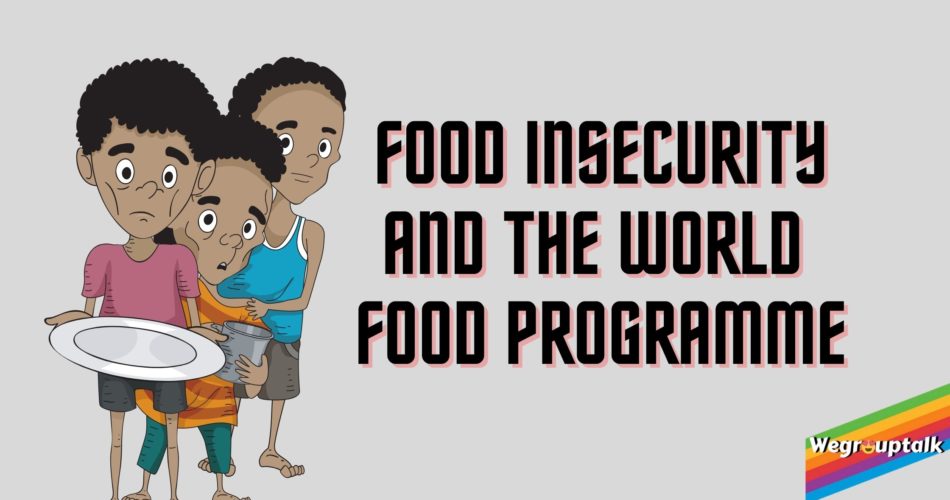If you have access to the internet and are reading this blog post, then probably you might not be much familiar with food insecurity. You must be having proper access to food when you are hungry, whether it is from a restaurant, or your own house’s kitchen garden or the market. So basically you do not worry if you will be getting the next meal of the day or not.
But, the harsh reality is that it is not the same case for all the people worldwide. Even someone who lives two blocks down the lane in which you live might also not have the same case.
What is Food Insecurity?
Now coming on to what exactly food insecurity is? It refers to the uncertain availability of food and beverages due to lack of money and other kinds of resources.
Due to a lack of money and other resources, food insecurity is characterised as the disturbance of food intake or eating habits. Hunger is not inherently caused by food insecurity, but hunger definitely is a potential outcome of food insecurity. The Department of Agriculture of the United States (USDA) divides food insecurity into two categories:
- Low food safety: Reports of decreased diet consistency, variety or desirability. It may have a few to no sign of a decreased consumption of food.
- Very low food security: Reports of multiple indications of disrupted eating patterns and reduced food intake
Food insecurity can be long term temporary depending upon several factors.
Causes of Food Insecurity
The next question that arises is what causes food insecurity? The answer to it is that food insecurity stems from various issues like–
- Factory farming
- Food wastage
- Ineffective and inefficient distribution of exported food
- Extreme poverty
- Lack of public transportation in developing countries
- The remote location of towns and villages
- Political instability
- Lack of access to irrigation in dry and hot climates.
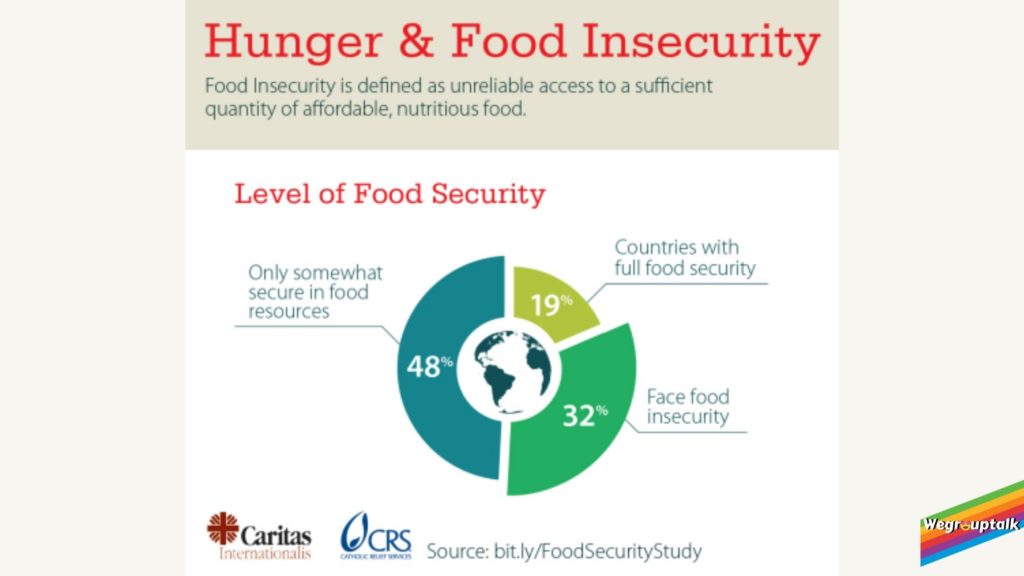
Effects of Food Insecurity
Now, let’s look at the health risks involved because of food insecurity –
- Lifelong diseases: Adults who have low income or more probable to fall under the category of food-insecure people and such people are likely to have chronic diseases like cancer, diabetes or heart conditions.
- Obesity: Adults and children who are food insecure have more tendency to get obese. The reason behind this is that they get access to only unhealthy food or they go through cycles of not getting enough food and then when they get some food they overeat it. This obesity affects their physical and mental health, causing disruptions in their social life as well. It is also linked to issues like high blood pressure, asthma, diabetes and depression.
- Children’s health and immunity: Children who stay in homes that are food insecure have more probability of getting sick and they will have an even harder time to recover from that sickness of theirs and will end up going to the hospital more often. And, in times when they will not get an appropriate amount of food, they will be facing trouble concentrating in their classes and may misbehave frequently and may have more emotional problems due to this when they are small as a kid.
- Risks in pregnancy: The child may have congenital disabilities like anaemia and other development problems if the mother is given to food insecurity. And also, if the mother does not get enough food to eat, then she might go into labour too early, and the baby will then have a low birth weight which will again cause risk to the baby’s life.
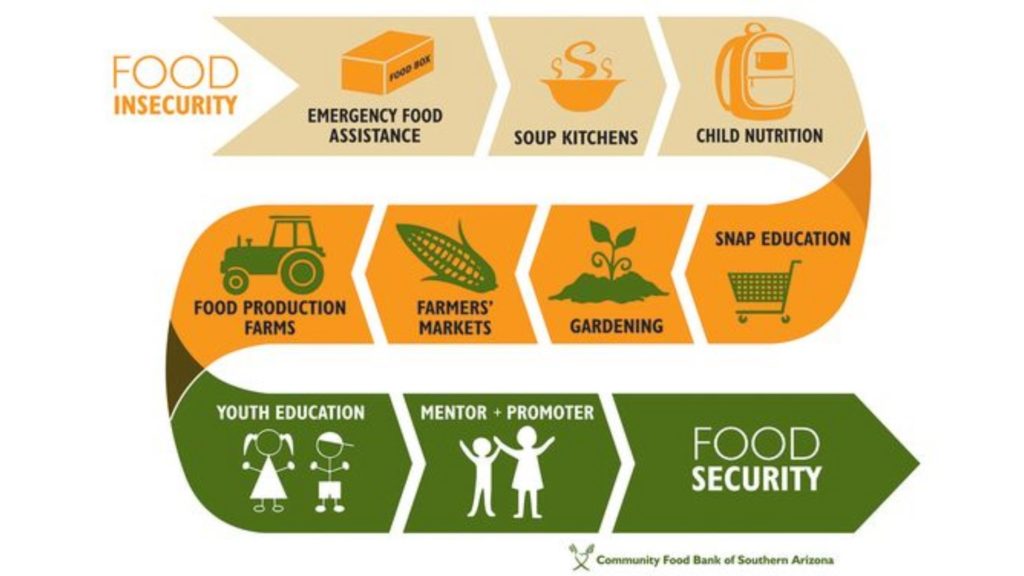
Statistics
Food insecurity is not an abstract concept. IT IS REAL! Millions of people do not receive their minimum need of daily calories, and a large percentage of people don’t even have access to water. Statistics suggest that in some parts of Asia and Africa, children and women walk nearly 4 miles on average to get drinking water which sometimes is not even safe to drink. In the United States of America, one out of six children goes hungry to sleep every day. In the year 2014, 17.4 million households in America were food insecure at some point in time during the year. Aren’t these stats and this data on hunger and food insecurity like an eye-opener for all of us?
Now, let’s study what the World Food Programme is? And what is it doing to reduce the food insecurity that people are facing in the world?
What is The World Food Programme?
World Food Programme is a United Nations agency which focuses on the elevation of hunger and food security. It works on a world level and responds to emergencies making sure that the food reaches of that place on time. It focuses on enabling the country’s food-based social safety nets so that they can function more effectively and efficiently in giving food to their targeted population. Its ultimate goal which it wants to fulfil is to eliminate the need for food aid itself. Its headquarters are situated in Rome.
WFP is a member of the United Nations development group and part of its executive committee. The organisation was born in 1961. It has the vision to eradicate hunger and give access to food at all times to every child, man, and woman. It is funded by the voluntary donations from corporations, private donors and the world governments.
How is it working?
When dealing with structural food insecurity or facing an emergency, it is the information that can save lives. So, a unique network of 150 analysts around the globe provide the WFP data about who are the vulnerable people to food insecurity, how many are they, where do they live, why are they vulnerable to it, what what is the probability that the situation will evolve and become better or what are the risks that threaten them more into food insecurity. This data guides the World Food programme to help people in need out. It is known as food security analysis work, more popularly known as the Vulnerability Analysis and Mapping (VAM).

It also conducts food security assessments with its partners that are mainly the governments of various countries, the FAO ( Food and Agriculture Organization of the United Nations), national and international NGOs, UNICEF and the United Nation’s Refugee Agency (UNHCR).
For example, in India, it works with the government’s Ministry of Agriculture to reduce the food insecurity among the people of India.
What all has WFP done so far?
It has worked with 88 countries and has assisted 97 million people so far. This is the largest number since 2012. The World Food programme is the leading and the largest humanitarian organisation changing and saving lives by delivering food assistance in emergencies like epidemics, natural calamities, humanitarian crises etc. It is working with communities to improve nutrition and build resilience.
On any given day, the World Food Programme has nearly 5600 trucks, 100 planes and 30 ships on the move delivering assistance of food and other resources to the people in need. Each year, the WFP distributes more than 15 billion Russians, of which the estimated average cost per ration is around US$ 0.61. Because of the assistance that the organisation is providing it has an unparalleled reputation as an emergency responder all over the world. It gets the job done quickly add scale even in the most challenging terrains and environment.
The World Food Programme puts a significant focus on emergency assistance, development aid, special operations and relief and rehabilitation. Most of the work, nearly two-thirds of it is in conflict-affected countries; their people are three times most likely to be undernourished than the countries that are facing no conflict.
The organisation’s development projects focus on nutrition, especially for growing children and mothers. They try to address malnutrition from the earliest stages of life through programs that target the first thousand days of a pregnant lady that is from conception to her child’s second birthday and then they later provide that child, meals in the school. In the year 2019, WFP provided 17.3 million school-going children means in about 50 countries which were often the hardest to reach areas.
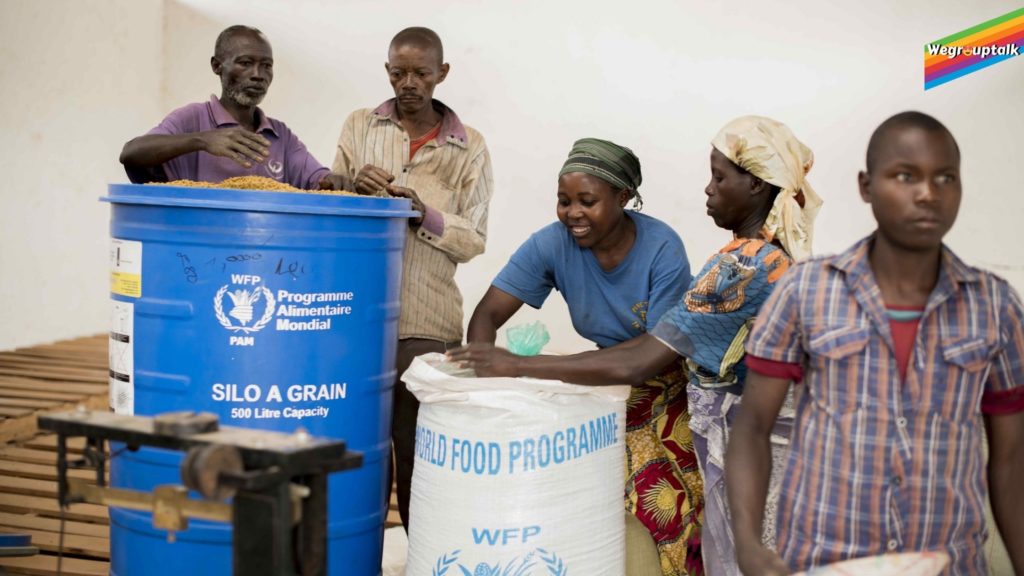
In the year 2019 itself, the organisation provided 4.2 million metric tonnes of food and cash and vouchers of US$ 2.1 billion to people in need. The organisation buys food as close as possible to the location where it is needed. This way, it saves a lot of time and money on the cost of transportation and also helps in sustaining the local economies. It also meets people’s need for food through cash-based transfers so that people can choose and shop for their food locally.
The next very remarkable thing that the organised is doing is that it provides passenger air transportation through the UN humanitarian air service which flies to more than 280 locations over the globe and this way it provides service to the entire humanitarian community.
What are the plans or objectives ahead?
It’s major plans are-
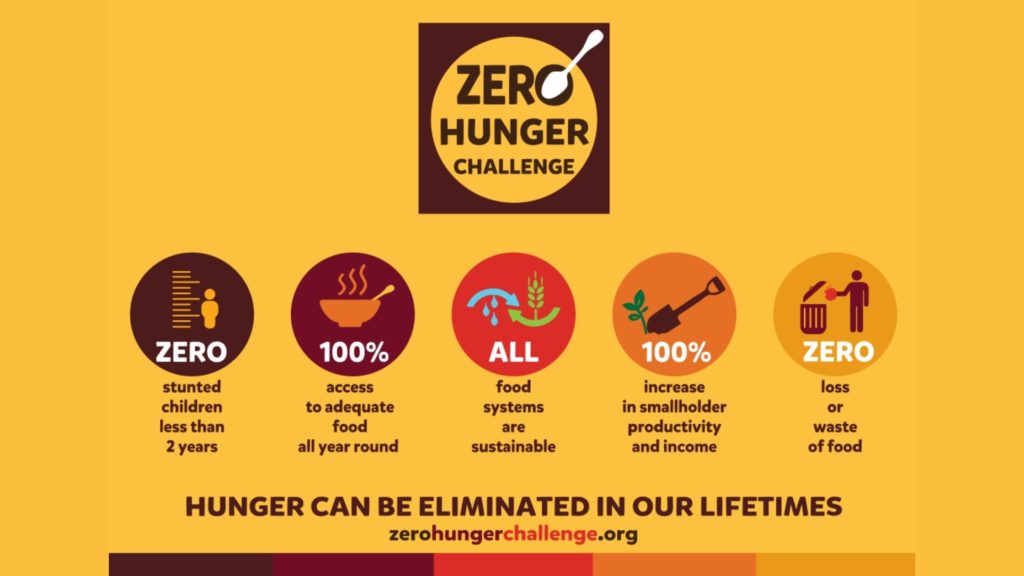
- Zero hunger by 2030
- Reduce undernutrition and break the cycle of inter-generational hunger.
- To reduce risk and enable people in communities and countries to meet their own nutrition and food needs and demands.
- To support the food security and nutrition to build or rebuild livelihoods in settings that of rejoin and the ones that follow emergencies.
- To save and protect lives and livelihoods in times of emergencies.
So, now at the end, let’s all pledge to help and support the people in need and make this world a better place to live for all.
Follow us on FACEBOOK, INSTAGRAM and TWITTER to stay connected!!
ALSO READ- Why is Hunger Still a Problem?

